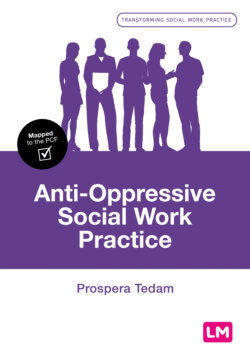Читать книгу Anti-Oppressive Social Work Practice - Prospera Tedam - Страница 13
Introduction
ОглавлениеServing as the opening for this book, this chapter does more than introduce the concept of oppression. It provides an opportunity to discuss what is meant by oppression, and considers oppression within the context of social work education and practice. The social work profession has a longstanding interest in equality, fairness and social justice, and it is important that these continue to be at the forefront of our thinking and everyday practice. In this chapter, we will discuss a few definitions of oppression and utilise case studies and activities to stimulate thinking and ideas about anti-oppressive practice. The ‘Ally model’ of social justice (Gibson, 2014) will be presented as a useful way of supporting anti-oppressive practice, as well as the SHARP framework (Shaia, 2019) to understand oppression in the context of poverty and socioeconomic disadvantage. Experiencing disadvantage has the potential to stigmatise people, and social workers must work at changing social relationships which create stigma, social exclusion and ultimately oppression. These social relationships also include the social worker’s own relationship with service users. Anti-oppression must start from an understanding of history and historical processes, which have resulted in ideology and practice that has oppressed groups, individuals and whole societies. Neoliberalism is an ideology that retains and maintains domination, exploitation and power arising from colonial relations and extending to present day. It is therefore not uncommon to see that the exchange of capital takes precedence over social justice (Giroux, 2003, p196), something that social work and you, as social workers, must challenge because it essentially means rationing resources at the expense of meeting the needs of service users.
